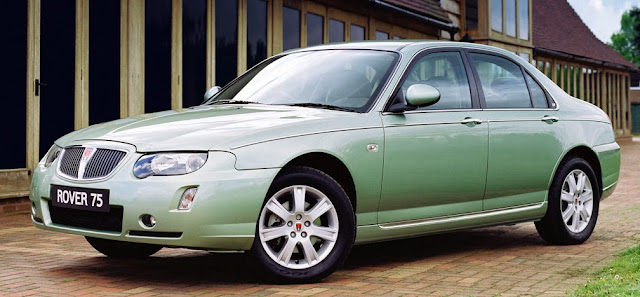They call it the Antique Car Museum, but it's really mostly about Packards. My wife was getting in a tennis session plus some poolside sunning, and I was at loose ends because those activities aren't for me. A dive into the guidebook entry for Fort Lauderdale, Florida mentioned a car museum, something up my alley. So off I went. The museum lies a mile or so south of the city's downtown on a sidestreet so, like me, you might have to grope around a little to find it. But the price of admission is very reasonable, and the collection is interesting.
What the museum's not is glitzy or over-curated. No shiny black floors and spotlights like the Blackhawk museum in California. No faux street scenes as in the ex-Harrah museum in Reno, the Petersen museum in Los Angeles or the Henry Ford museum near Detroit. Just all kinds of stuff everywhere. That stuff includes custom car designer renderings from the 1930s, framed car ads for many brands, cases containing shelves of hood ornaments, gasoline station and car dealer service signs, and much more potentially fascinating clutter. There's even a small room in homage of Franklin D. Roosevelt who for some reason didn't seem to favor Packards. Nobody's perfect.
Here are some of my photos. The quality varies because the museum walls are pierced by many small windows that let in the intense south Florida daylight that contrasts with the otherwise fairly dark interior.
Touring car - 1931
This is one of the more elegant Packards from the marque's heyday as America's top luxury automobile.
Runabout - 1928
The golf bag in the rumble seat is a nice touch. Note the huge spotlight mounted aft of the front fender. 23-skidoo!
Convertible - 1939
Seen 74 years later, this Packard seems very impressive. But at the time, its styling lagged behind its Cadillac and Lincoln competition which were featuring more streamlined shapes.
Caribbean - 1955
One of the last of the "real" Packards. After the 1956 model year, Packards were built, but their bodies were facelifted Studebakers. That's called dying with a whimper.
Station wagon - 1948
The greenhouse rear treatment makes it sort of a "woodie," but nearly all the body was metal. The photo doesn't show how narrow the woodie part was; this wagon wasn't all that functional.
Convertible - 1950
This car and the wagon in the previous photo represent facelifts of the attractive 1941-47 Clipper body. The facelift included clumsy flow-through fenders that enhanced the awkward, bulky appearance of the cars. The convertible shown here was the top-of-the-line model and somehow seems slightly impressive nowadays.
Light Eight - 1932
Luxury car makers were hit especially hard by the Great Depression. For 1932, Packard added the Light Eight line in an attempt to offer lower prices without tarnishing the Packard mystique. From what I read, the Light Eight was still expensive to produce, and it did little to stanch declining sales. The line was abandoned for the 1933 model year.
Light Eight grille
The styling feature I like best on the Light Eight is its grill, popularly called "shovel nose." To me, it combines the traditional Packard iconography at the top with a gesture to streamlining at the bottom.




































.jpg)


